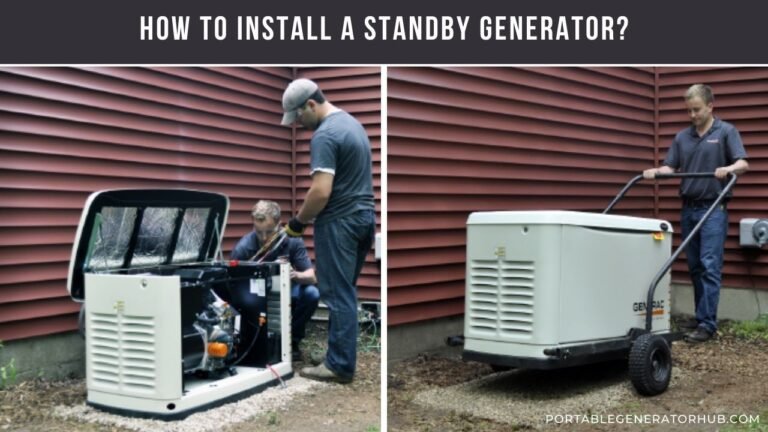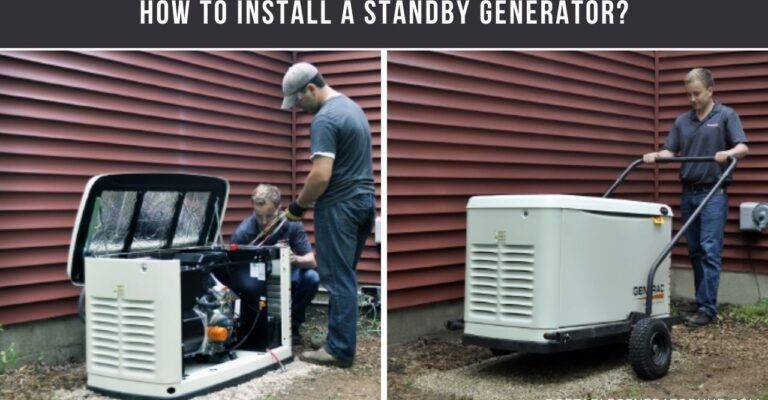
Now, standby generators—think brands like Generac or Kohler—aren’t exactly a casual purchase, like picking up an extra umbrella. They’re big, powerful machines that are ready to kick in and power your entire home when the lights go out. But is that level of backup really worth it if you live in 10003? Let’s walk through everything you should consider, from how these generators work with your local infrastructure to whether they’re truly needed, especially compared to portable models or smaller emergency options.
What’s Unique About Power Outages In 10003?
Let me explain what sets this part of Manhattan apart when it comes to electricity reliability. New York City has some of the nation’s most robust infrastructure, but 10003—covering parts of Greenwich Village, the East Village, and Union Square—also has its quirks. Power lines are mostly underground, which is generally great for avoiding storm damage. Still, dense population, old wiring, and heavy summer air-conditioning loads can stress the grid.
You might be wondering, “Isn’t the city less likely to lose power than the suburbs?” In many ways, yes. But when outages do happen, they can last longer, especially if major repairs are needed. For apartment dwellers in classic pre-war buildings, backup power options are usually limited. But for anyone in a brownstone, townhouse, co-op, or ground-floor business, the loss can feel particularly disruptive.
Honestly, most blackouts here aren’t due to wild weather—it’s just as likely to be something mundane, like a blown transformer or scheduled utility work. It’s a weird blend: infrequent, but when it happens, it’s a headache. And because 10003 is so densely packed, one outage can impact thousands of people, making emergency repairs more complicated.
How Do Standby Generators Work, Anyway?
Here’s the thing: a standby generator isn’t like that little portable one your uncle uses to run a few tools at his cabin. These are permanently installed—usually outside your building—and automatically turn on the second the main power goes out. Picture it like a back-up quarterback waiting on the sidelines, helmet in hand, ready to sprint onto the field without anyone needing to shout.
Standby generators use natural gas (very common in NYC) or sometimes liquid propane, so you never have to worry about running out of gas or fiddling with extension cords. They connect directly to your existing electrical system and usually include a transfer switch to sync things up safely, so there’s no risk of back-feeding power onto city lines (a big safety concern).
You might hear words like “code,” “sync,” or “pairing” tossed around when installing one of these. Don’t let the jargon scare you off. It just means making sure the generator knows when to kick on, and that it’s wired safely to your home. Generac is a leading brand here for good reason: they offer models designed for tight urban spaces, many with remote monitoring to alert you (on your phone!) if there’s a fault or if the battery needs maintenance. You won’t be out in the rain with a flashlight trying to troubleshoot or reset panels.
Is A Standby Generator Worth It For Your NYC Home?
This is the million-dollar question, right? In zip code 10003, the answer depends on your needs and what “worth it” really means to you.
- If you work from home and can’t afford a single day offline, a generator can feel like a lifesaver.
- If you have medicines that need refrigeration, or anyone in your home relies on powered medical devices, it’s almost a necessity.
- For folks who just hate the hassle (spoiled food, no elevator, uncomfortable summers), it’s a luxury that can quickly pay for itself in peace of mind.
But, let’s be honest: standby generators are an investment. Installation in NYC usually ranges from $8,000–$15,000, including permits and setup. That’s not pocket change, but compare it to a week of hotel stays, restaurant food, and lost work during a long outage and it starts to look less wild.
One trade-off is the *space and noise*. You’ll need a clear spot outside, usually near a gas line, that meets fire codes. Generators aren’t silent—but many modern models are designed to run surprisingly quietly, especially during battery tests or light loads. And since you’re in the city, you’ll want professional installation to get all those permits in line (NYC is strict about this).
Common Problems People Run Into With Standby Generators
Let’s talk about reality: even the best system has its quirks. In Manhattan, you’ll face unique challenges you wouldn’t deal with in the suburbs.
One biggie is space. Townhouses and brownstones in 10003 don’t always have roomy backyards. Squeezing a standby generator into a tiny alley or rooftop corner can get tricky. Local code will limit where you can put the unit, sometimes to within a certain distance of windows, doors, or neighboring buildings.
There’s also troubleshooting to consider. Even smart generators need the occasional reset or battery check. Most modern models come with apps for remote monitoring, but if you’re a total beginner, having a reliable service tech on call is a must. NYC weather—freezing winters, salty air from the rivers—can mess with electrical connections if they’re not maintained.
Lastly, think about permits and building codes. The city isn’t shy about enforcing them, and in co-ops or condos, you’ll also need building board approval. Getting all the paperwork squared away can take a month or more, so patience is key. Trust the process—it’s worth it for safety and resale value.
How Does A Standby Generator Compare To Other Backup Options?
Let me set the scene: the power’s out, and you’ve got a few options. Here’s how standby generators stack up compared to portables and battery backups.
- Portable Generators: Cheaper up front (usually $500–$2,500), but you’ll need to roll them outside, refuel with gas, and manually plug in appliances. They won’t run your whole house, and most Manhattan buildings make it tricky (or outright illegal) to use them indoors or on fire escapes.
- Battery Backups: Think Tesla Powerwall or small backup batteries. Quiet and maintenance-free, but only last a few hours to a day, and can’t handle big loads (like AC or major appliances). Fine for a short Wi-Fi fix, not a days-long blackout.
- Standby Generators: Automatically keep things running, and with remote monitoring, you don’t even have to be home. Higher up-front cost, but if you want seamless, whole-home coverage and don’t want to worry about anything when the lights go out, nothing else really compares.
So, if you just want to charge your phone and a flashlight, a battery will do. Need the fridge, lights, hot showers, internet, and maybe even central air? A standby generator is your only real “set it and forget it” option.
What’s The Installation Process Like In 10003?
You might be picturing a team of workers digging up your sidewalk or a generator plunked in the middle of your tiny garden—don’t panic. Professional installers know the city’s quirks inside and out. Here’s how it usually goes:
- Site Evaluation: The installer scouts your property for code-compliant spots, checking clearances from walls, windows, and exhaust vents. In Manhattan, this often means getting creative—sometimes the only spot is a back courtyard or small alley.
- Permitting: NYC requires all sorts of paperwork, especially around gas lines and electrical work. Your installer handles this, but expect a few weeks’ wait.
- Installation: The unit gets mounted on a concrete pad, hooked into your gas and electric lines, then thoroughly tested. Installers will sync the transfer switch, pair remote monitoring, and walk you through basic maintenance like resetting the system or checking the battery.
- Approval & Inspection: The city inspects for fire safety and code compliance before giving the final OK. In a co-op or shared building, the process can take a little longer, but a good installer navigates the paperwork for you.
Most of the time, there’s minimal disruption—just a few days of work, and then you’re covered for years.
How To Maintain Your Standby Generator (And Why It Matters)
Here’s something people often overlook: even the best generator needs a little love to keep running smoothly. In 10003, with its salty river air and unpredictable weather, this matters more than you’d think.
It’s not about being a code geek or learning to fix things yourself. Basic maintenance is mostly hands-off—modern Generac and Kohler models run self-tests every week, keeping their battery charged and ready to go. You can check status with a remote app, so you’ll know right away if something needs attention, like a sync error or low battery warning.
Still, it’s smart to schedule a yearly service visit. A pro will:
- Change the oil and filters
- Test the battery and reset the system if needed
- Clean air vents and check for pests or ice buildup
- Inspect all wiring and gas lines for wear or leaks
With good care, a standby generator lasts 10–20 years—longer than most home appliances. Trust me, you don’t want to find out your backup is dead the one time you really need it.
Cost, Value, And The Real Payoff In 10003
Money always creeps in at the end, doesn’t it? Here’s where to park your expectations. In Manhattan, the total bill for a new standby generator (plus permits, install, and code sign-offs) is usually in the $10,000–$20,000 range. The variation comes from how much power you want, what brand you pick, and (honestly) how creative the installer needs to get with your building’s quirks.
But when you break it down, the value isn’t just about surviving a blackout. It’s about
- Protecting food and medicine
- Keeping family or tenants safe, especially if you’re a landlord
- Maintaining your work-from-home setup or home-based business
- Boosting resale value—many NYC buyers now look for backup power as a must-have
Sure, it’s not a small investment. But for many in 10003, the peace of mind is worth it. And once it’s in place, you truly can forget about it until the next big outage—knowing you’ll be cozy, connected, and maybe even the envy of the block.
If you’re tired of crossing your fingers every thunderstorm or dreading that next utility email, installing a standby generator is the kind of practical upgrade that pays off quietly and consistently.
So, should you install a standby generator in zip code 10003? If you value convenience, safety, and uninterrupted living in the heart of Manhattan, the answer is often yes. Just plan ahead, work with a skilled installer, and you’ll be ready for whatever the city throws your way—lights on, Wi-Fi humming, and fridge fully stocked, no matter what.
